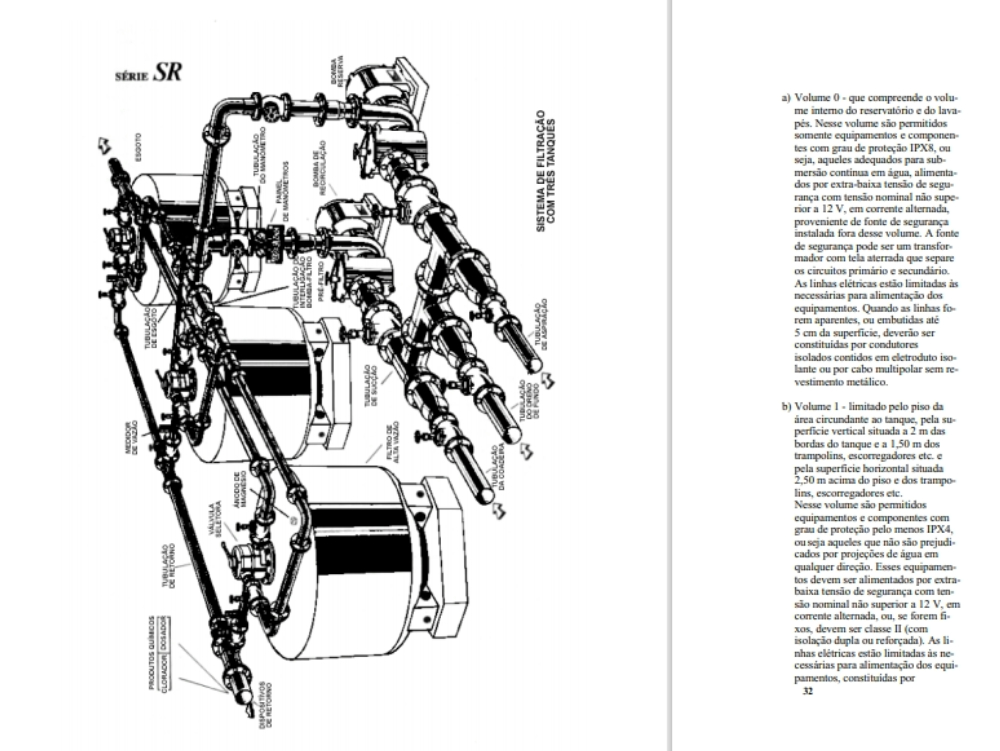As piscinas alinhadas por vinil embutidas são pdf

As piscinas de fibra de vidro são feitas de plástico reforçado com fibras de vidro; moldadas em forma de bacia. para a instalação; uma equipe de construção cava um buraco no tamanho apropriado; coloca as bombas necessárias; enche com um pouco de areia e desce a estrutura pré-construída para dentro do buraco. em seguida; eles nivelam a piscina; engancham todas as bombas e fecham a área ao seu redor. geralmente; é rodeada por uma estrutura de concreto. * as piscinas alinhadas por vinil embutidas são estruturalmente muito parecidas com as anteriormente descritas; mas se parecem mais com modelos convencionais embutidos. a equipe de construção cava um buraco e monta a estrutura de metal; plástico ou madeira em todo o perímetro do buraco. como em uma piscina não-embutida; a equipe coloca areia no fundo do buraco e fixa o alinhamento de vinil na parede estrutural. essas piscinas são muito mais baratas do que outros modelos embutidos; porém não tão duráveis. em geral; o alinhador precisa ser substituído aproximadamente a cada dez anos. * as piscinas gunite são o modelo mais popular na maior parte dos estados unidos. para construir; a equipe cava um buraco; coloca a bomba no lugar e monta uma grade estrutural com hastes de aço reforçadoras de 0;07/0;2 m (estrutura montada). as hastes possuem espaçamento de 2;5 m e são presas com arame. quando a grade estiver no lugar; a equipe joga uma cobertura pesada de gunite; uma mistura de cimento e areia; ao redor da estrutura montada. o spray combina gunite seco misturado com água antes de ser borrifado: isso produz o concreto líquido. a equipe aplica o gunite e deixa secar por uma semana antes de aplicar o acabamento à superfície. o acabamento mais popular chama-se emplastro (uma mistura de cimento e areia branca); mas muitas pessoas fazem o acabamento com tintura de concreto especial; ladrilho; pedras ou mesmo fibras de vidro. as piscinas de gunite (e suas semelhantes; as piscinas shotcrete) são altamente duráveis e podem ser construídas em qualquer tamanho ou modelo. * as piscinas de concreto armado são semelhantes às piscinas de gunite; mas são muito mais difíceis de construir. em vez de borrifar material de concreto em volta da estrutura; o concreto é derramado dentro de formas convencionais de madeira. com o surgimento dos métodos de gunite; a construção de piscinas de concreto armado foi deixada de lado. em piscinas de blocos de alvenaria; as paredes são construídas com blocos de concreto. embora os modelos destas piscinas sejam bem diferentes; eles se baseiam nos mesmos sistemas de bombeamento e filtragem. nas próximas seções; veremos como esses componentes mantêm a piscina funcionando. piscina flutuante uma piscina embutida pode parecer uma estrutura sólida e imóvel; porém pode ser comparada com um barco; já que pode flutuar na água que fica ao seu redor. quando a piscina está vazia; a pressão dessa água pode empurrar a estrutura para cima e assim desembuti-la. como a pressão precisa ser igual em cada lado da piscina; este é um dos motivos pelos quais as piscinas são mantidas cheias de água o tempo todo. piscinas embutidas mais modernas possuem uma válvula hidrostática perto do dreno principal para prevenir danos causados pela pressão da água no chão. basicamente; se essa pressão da água for grande o suficiente; causará uma leve flutuação; que abrirá a válvula. quando a válvula abrir; a água entrará e igualará a pressão.
